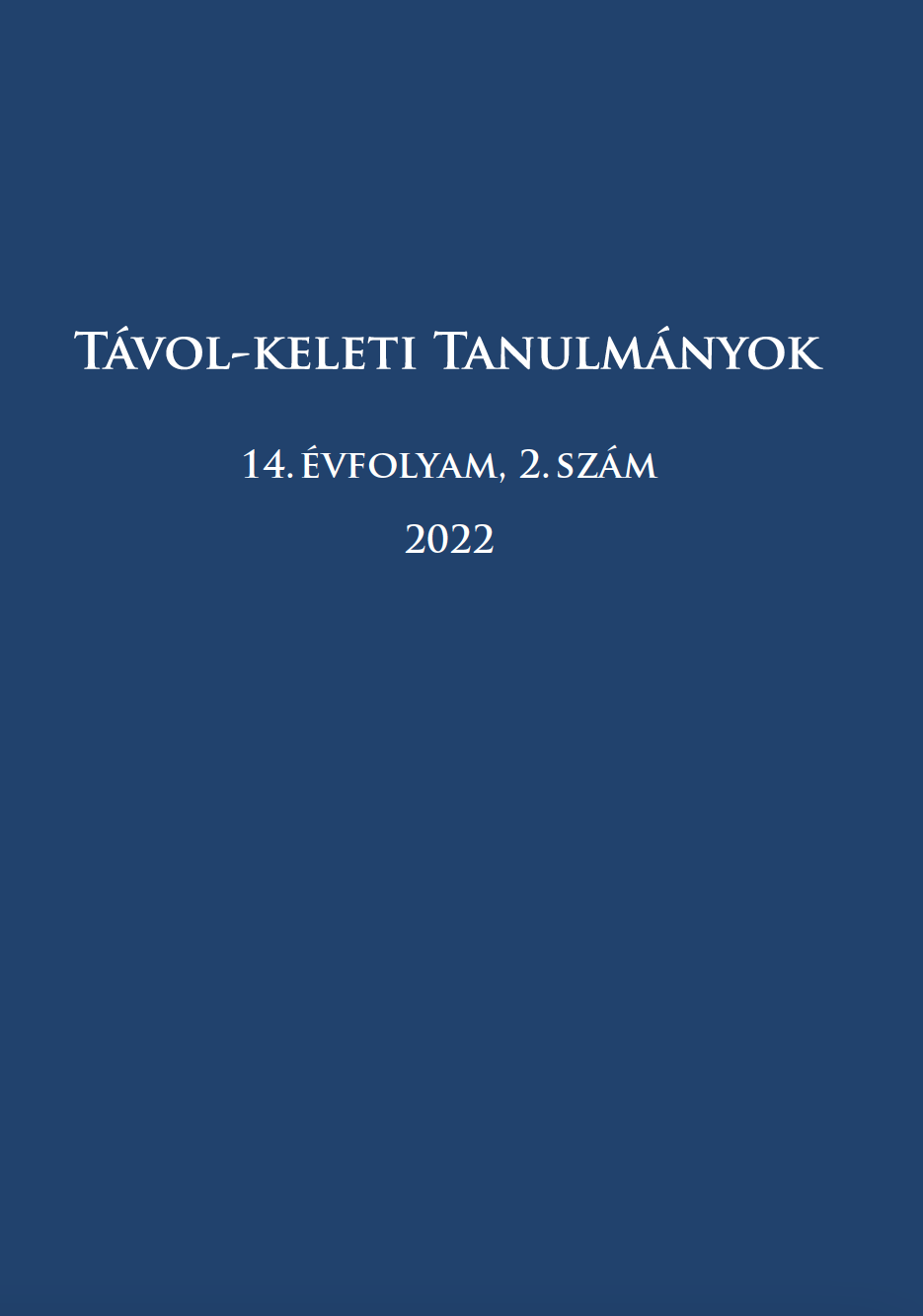Published 2022-12-06
Keywords
- writing,
- Chinese writing,
- China,
- Chinese archaeology,
- Chinese history
- Shang Dynasty,
- oracle bone inscriptions,
- bronze inscriptions ...More
How to Cite
Copyright (c) 2022 Anna Csikó

This work is licensed under a Creative Commons Attribution-NonCommercial 4.0 International License.
Abstract
Writing is certainly one of the greatest ‘inventions’ of mankind. Today modern societies would be unimaginable without writing (and reading). The extent of the power of those who possessed the ability to write and read in ancient times was perhaps even harder for us to imagine. According to our knowledge, during the history of the world writing evolved independently in only four places: cuneiform writing in Mesopotamia (3400-3300 BCE), hieroglyphic writing in Ancient Egypt (around 3200 BCE), oracle bone script in Ancient China (around 1200 BCE) and the writing of the Olmec culture (which is similar to hieroglyphic writing of Egypt) in Ancient Mesoamerica (around 900-500 BCE). Unlike the cuneiform in Mesopotamia and the hieroglyphic writing in Egypt, the appearance of the oracle bone script during the Shang Dynasty in Ancient China is obviously not the starting point of Chinese writing, since the oracle bone texts are clear proofs of a fully developed writing system. The question is whether there is any evidence that can support the theory that writing in Ancient China existed before the Shang Dynasty.
References
- Shangshu尚書 [Írások könyve.] 1982. Beijing: Zhonghua Shuju.
- Felhasznált másodlagos szakirodalom
- Bagley, Robert W. 2004. “Anyang Writing and the Origin of the Chinese Writing System.” In: Houston, Stephen (ed.): The First Writing. Script Invention as History and Process. Cambridge – New York: Cambridge University Press, 190–249.
- Boltz, William G. 1986. “Early Chinese Writing.” World Archaeology 17/3: 420–434. https://doi.org/10.1080/00438243.1986.9979980
- Boltz, William G. 1994. The Origin and Early Development of the Chinese Writing System. New Haven: American Oriental Society.
- Boltz, William G. 2000. “The Invention of Writing in China.” Oriens Extremus 42: 1–9.
- Bottéro, Françoise 2004. “Writing on shell and bone in Shang China.” In: Houston, Stephen (ed.): The First Writing. Script Invention as History and Process. Cambridge – New York: Cambridge University Press, 250–261.
- Chang, Kwang-Chih 1980. Shang Civilization. New Haven: Yale University Press.
- Demattè, Paola 1999. “The Role of Writing in the Process of State Formation in Late Neolithic China.” East and West 49(1/4): 241–266.
- Demattè, Paola 2010. “The Origins of Chinese Writing: the Neolithic Evidence.” Cambridge Archaeological Journal 20: 211–228. https://doi.org/10.1017/S0959774310000247
- Gelb, Ignace J. 1963. A study of writing. Chicago: University of Chicago Press. (2nd ed.)
- Houston, Stephen 2004. “Writing in early Mesoamerica.” In: Houston, Stephen (ed.): The First Writing. Script Invention as History and Process. Cambridge – New York: Cambridge University Press, 274–309.
- Pap Melinda 2019. „A Shang- és a Nyugati Zhou-kor vallása.” In: Simon-Székely Attila (szerk.): Lélekenciklopédia: A lélek szerepe az emberiség szellemi fejlődésében. IV. kötet: Ázsia, Amerika és az újvallások lélekvilága. Budapest: Gondolat Kiadó, 25–55.
- Qiu Xigui 2000. Chinese Writing. (Early China Special Monograph Series No. 4) Transl. by Mattos, Gilbert L. – Norman, Jerry. Berkeley: The Society for the Study of Early China – The Institute of East Asian Studies, University of California.
- Salát Gergely 2010. A régi Kína története. (Konfuciusz Könyvtár 1.) Budapest: ELTE Konfuciusz Intézet.
- Van Norden, Bryan 2003. “Oracle Bone Inscriptions on Women.” In: Wang, Robin R. (ed.): Images of Women in Chinese Thought and Culture. Writings from te Pre-Qin through the Song Dynasty. Indianapolis – Cambridge: Hackett Publishing, 2–3.

